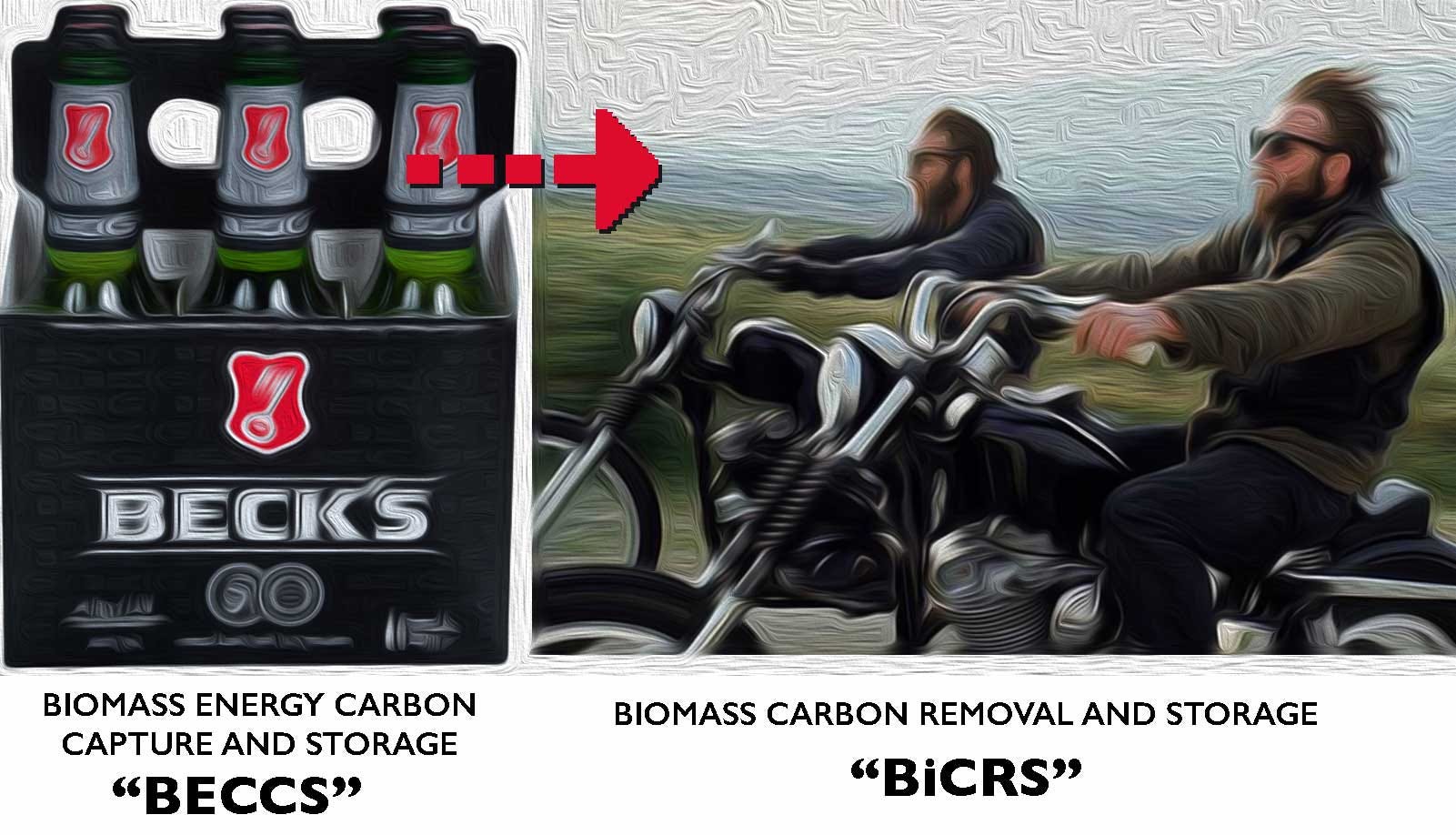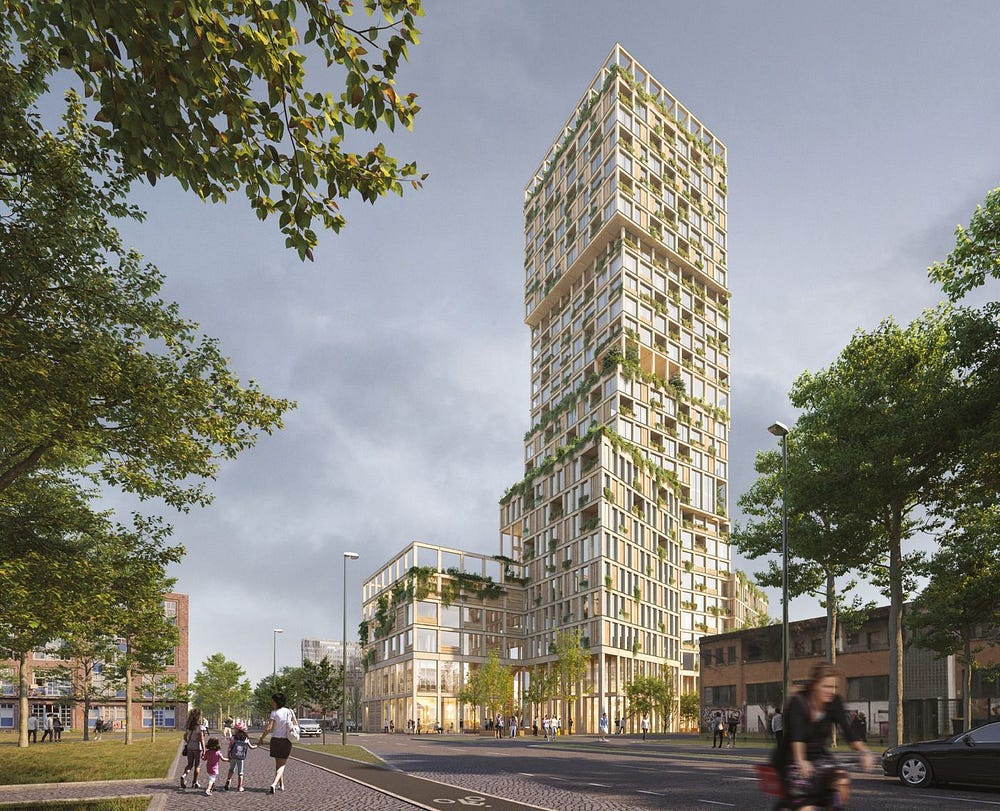The Great Pause Week 49: BiCRS Without Borders
"Imagine bamboo skyscrapers and biochar sponge cities. Imagine the Spruce Goose."
About 4000 years back, a breed of upright, thinking apes, having mastered fire, then pyramids, then nature (or so they imagined), redirected their energies from their daily allowance — from firewood, wind, rain and sunlight — to their billion-year fossil sunlight trust fund, which, as small withdrawals emboldened them and grew ever larger, they raided and spent.
Since 1088, when the scientist and statesman Shen Kuo coined the word 石油 (Shíyóu, literally “rock oil”) in his book Dream Pool Essays, wiser men have warned this sort of extractive economy, constantly withdrawing and never paying back, might not be a good idea. Prescient futurists— tracing at least to Malthus and Arrhenius — warned there would be consequences. Even so, generations of Rothchilds, Carnegies, Nobels and Rockefellers could not be denied their easy profits, Earth be damned. And thus we entered an exponential function, barely noticeable in its early years, but like all exponents, gradually rounding the corner on a J-curve and turning skyward.
That J-curve now describes not only extraction of oil and gas, but concentration of greenhouse gases; global surface temperature; acidification of the ocean; extinction of species; and all the gathering consequences of centuries of greed and neglect. It is power outages in Texas; zoonotic pandemics; monsoon drought; and wildfire destruction.
Today’s climate policymakers, grasping for a quick fix, imbibe fantasies
of BECCS (bioenergy with carbon capture and storage) and DACCS
(artificial trees) which, they are reliably informed by Bill Gates,
geoengineers, and the IPCC, has “a significant greenhouse gas mitigation
potential,” provided that the resources are developed “sustainably” (in
the production sense of that word) and that efficient, well-designed
bioenergy systems are used. The primary players in the BECCS space are
the UK’s Drax, Norway’s Fortum, and Holland’s Thence, supplying
large-tract plantation pellets to power-generating furnaces (sold in
3.9, 10.5 and 4.5 GWe units, respectively [a GWe is one billion Watts of
electric generating capacity, about the output of one nuclear reactor])
and competing for the global market as fast as they can, deploying
superfreighters filled with boutique chips of genetically engineered
Finnish spruce and Indonesian eucalyptus.
A forthcoming IPCC report is expected to say that BECCS can deliver 80 to 90 percent emission reductions compared to the fossil energy baseline, and that is true enough, taken in isolation. However, land use conversion and tillage lead to massive and rapid losses of soil carbon, water, and biodiversity (including soil microbes) that can lessen, and in some cases more than erase, any net GHG reductions.
But look out your window. Temperature increases, rainfall pattern changes, weather wilding, and increased frequency of extreme events all diminish biomass photosynthetic productivity. Most vulnerable are exactly the kinds of monoculture cropping patterns favored for industrial scale BECCS by the techno-utopians: bio-lab cultivars, in satellite-directed straight rows, dependent on chemical drips, tended by robots.
 |
In considering this topic, we found the existing nomenclature to be inadequate, so introduce the new term “biomass carbon removal and storage,” or BiCRS. We conclude that BiCRS processes have the potential to contribute to climate change mitigation.… We believe that concerns with respect to potential adverse impacts of using biomass for CO2 removal and storage are vitally important and must shape any vision for how BiCRS processes scale.
Unlike BECCS, which is conceived as a capital and resource intensive industrial process with little consideration for social or biodiversity impacts, BiCRS “describes a range of processes that use plants and algae to remove carbon dioxide from the atmosphere and store that CO2 underground or in long-lived products.” Behold, the new carbon economy Kathleen Draper and I described three years ago in Burn.
https://www.chelseagreen.com/product/burn/
Instead of imagining fake meat factories powered by wood pellets, imagine Geppetto’s workshop with mittened childrens’ faces pressed to its frosty windows hoping to see wooden puppets come to life. Imagine bamboo skyscrapers and biochar sponge cities. Imagine the Spruce Goose.
Imagine an app for this: just swipe your watch screen to see a circle chart of how your Uber app and your diet app combined to offset the burger you ate in the backseat while being driven 12 miles by automatically buying you an offset on GoEarth for 12 cents.
In the meantime, caveat emptor.
There is clearly an enterprise void here. How is it that clever GenZ app developers from the Netherlands or Hong Kong have not already teamed with ReGEN International reforestation brokers and or Aussie biochar producers like Rainbow Bee Eater to pitch venture capitalists nine digits worth of stock options to be able to launch in 12 months?
Buck and Sanchez insist that BiCRS must do no harm. Those Hong Kong developers need to code in the Hippocratic Oath. All BiCRS (pronounced “bikers”), to be worthy of their colors, must swear fealty to food security, rural livelihoods, biodiversity conservation, and equitable income distribution. Think BiCRS Without Borders.
Carbon Dioxide Removal science is moving so rapidly that unless you are following every lab every week, your scorecard is likely hopelessly out of date, as were the January 2021 Greenpeace UK Briefing, Net Expectations; Bill Gates’ 2021 book, How to Avoid A Climate Disaster; the Drawdown Review 2020; and potentially will be the IPCC’s 2021 Sixth Assessment Report.Meanwhile, Buck and Sanchez’s BiCRS gang is busy tooling up something akin to Asimov’s three rules for robots:
■ First, do no harm.
■ Second, social acceptability is key to BiCRS’ success.
■ Third, technology development should reflect social priorities.
These should be the pledges for the Green New Deal, Zero Carbon targets, AI, Facebook, hyper-rail, driverless cars, crypto, and all new tech on a crowded planet in crisis. Pinocchio was a combination of the Italian words pino (pine), and occhio (eye). We should all be learning to see the world from a tree’s point of view, and hold foremost the interests of future forest planet dwellers; those with two legs, four legs, eight legs, scales, wings, and roots in the ground.
________________________________
The COVID-19 pandemic has destroyed lives, livelihoods, and economies. But it has not slowed down climate change, which presents an existential threat to all life, humans included. The warnings could not be stronger: temperatures and fires are breaking records, greenhouse gas levels keep climbing, sea level is rising, and natural disasters are upsizing.
As the world confronts the pandemic and emerges into recovery, there is growing recognition that the recovery must be a pathway to a new carbon economy, one that goes beyond zero emissions and runs the industrial carbon cycle backwards — taking CO2 from the atmosphere and ocean, turning it into coal and oil, and burying it in the ground. The triple bottom line of this new economy is antifragility, regeneration, and resilience.
Help me get my blog posted every week. All Patreon donations and Blogger subscriptions are needed and welcomed. My brief experiment with a new platform called SubscribeStar ended badly, with my judgement that they are not yet ready for prime time. You are how we make this happen. Your contributions are being made to Global Village Institute, a tax-deductible 501(c)(3) charity. PowerUp! donors on Patreon get an autographed book off each first press run. Please help if you can.
“There are the good tipping points, the tipping points in public consciousness when it comes to addressing this crisis, and I think we are very close to that.”
— Climate Scientist Michael Mann, January 13, 2021.








Comments